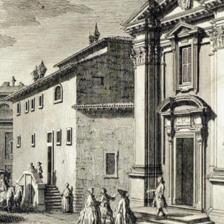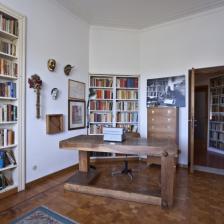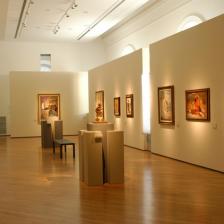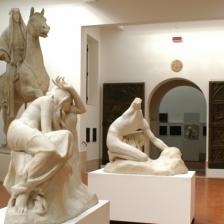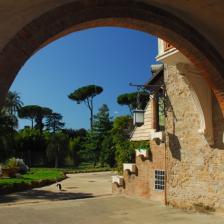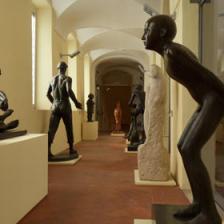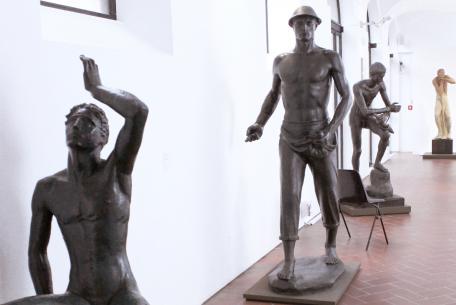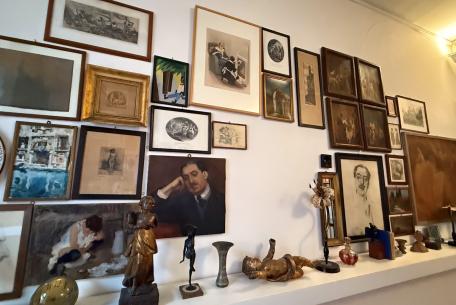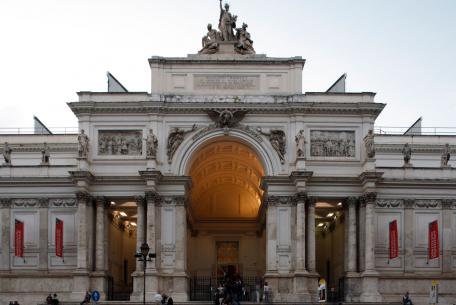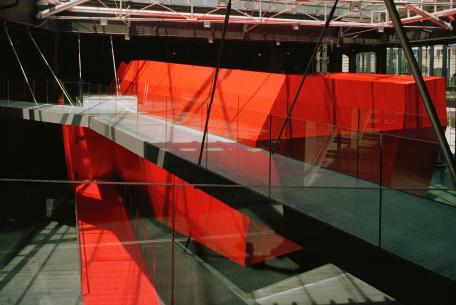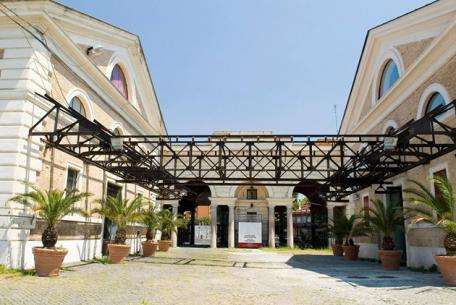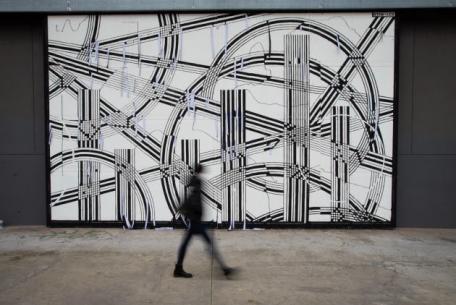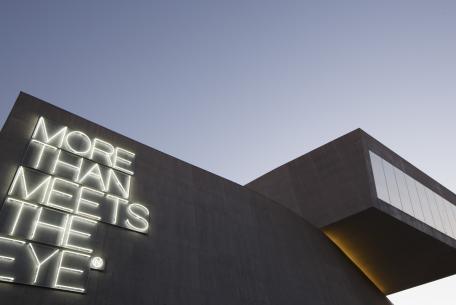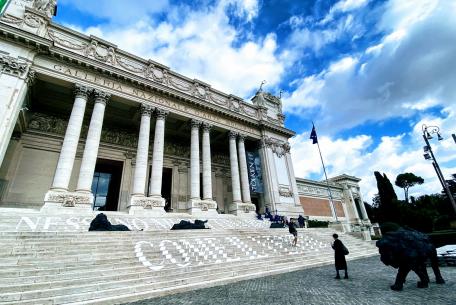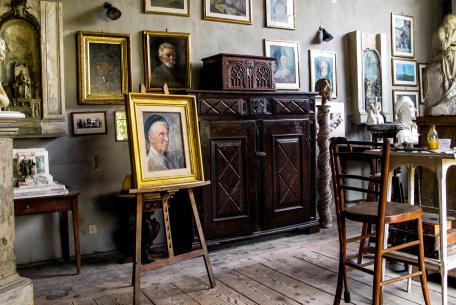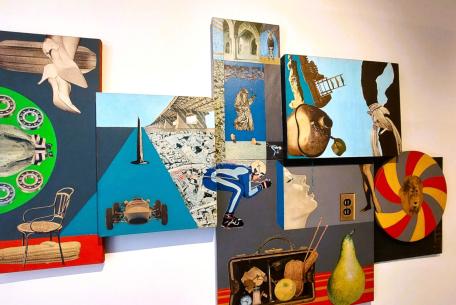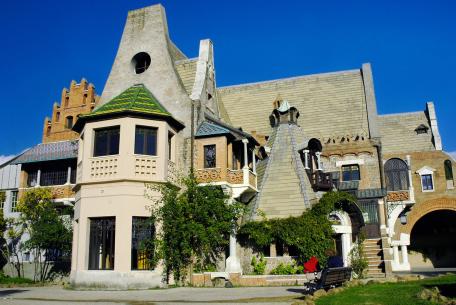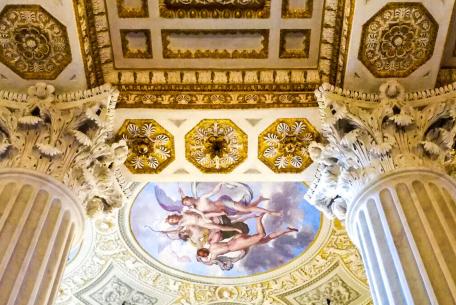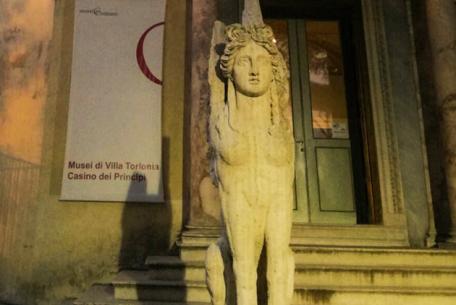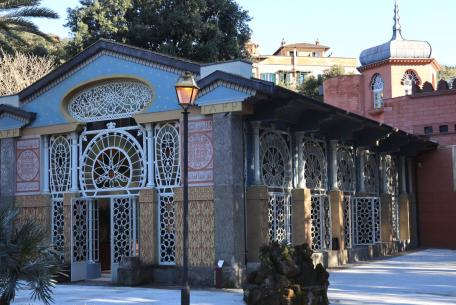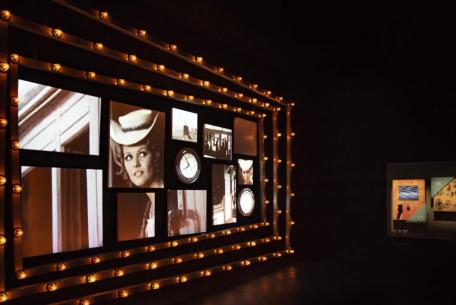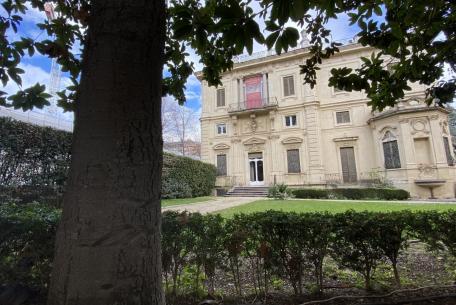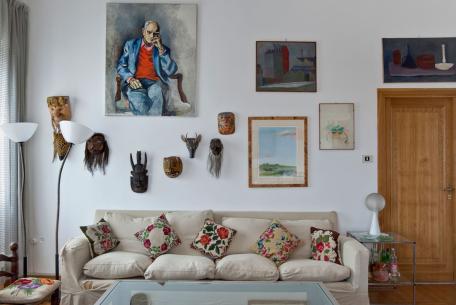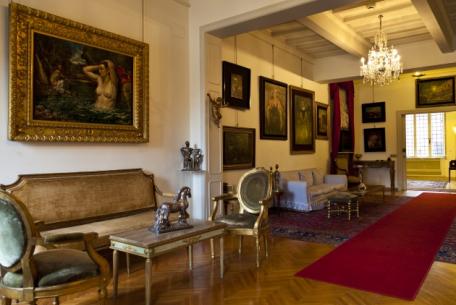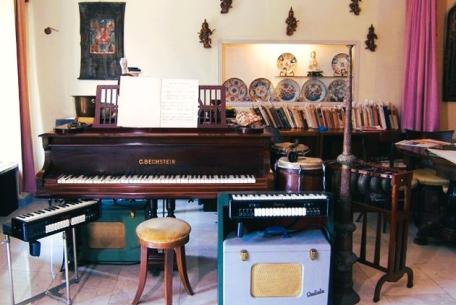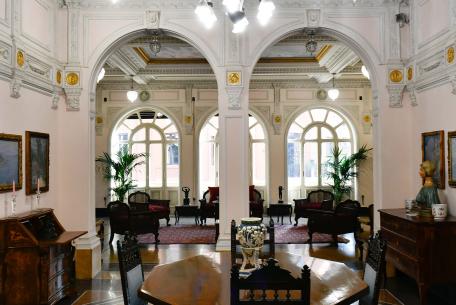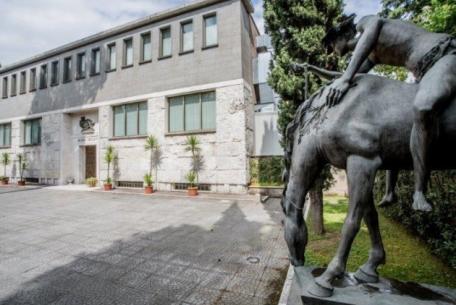
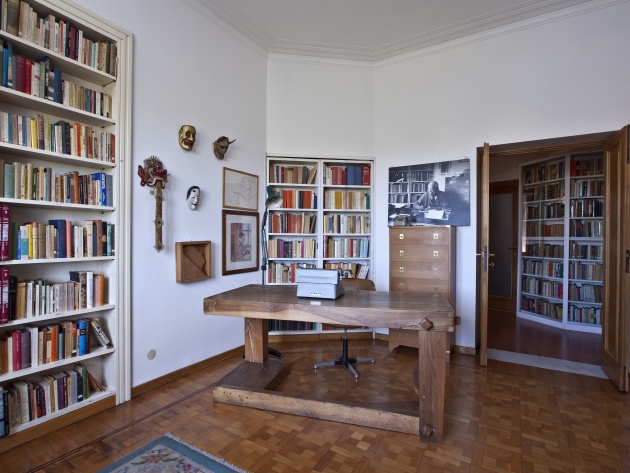
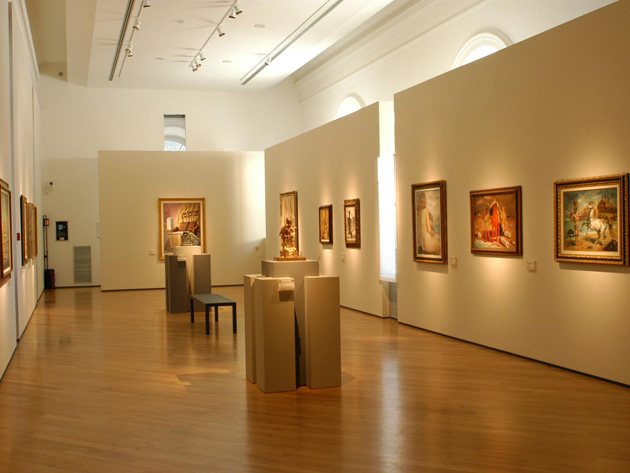
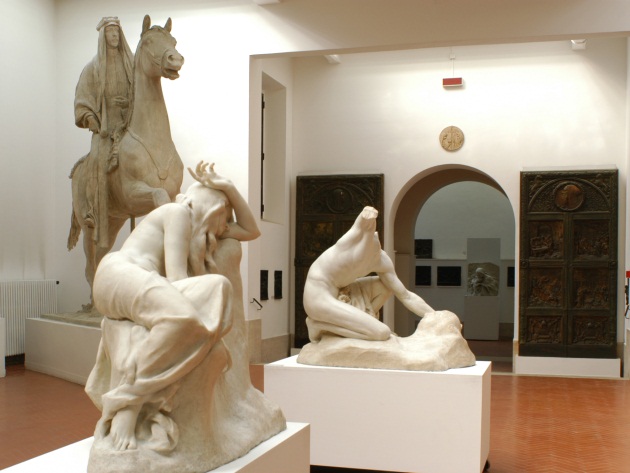
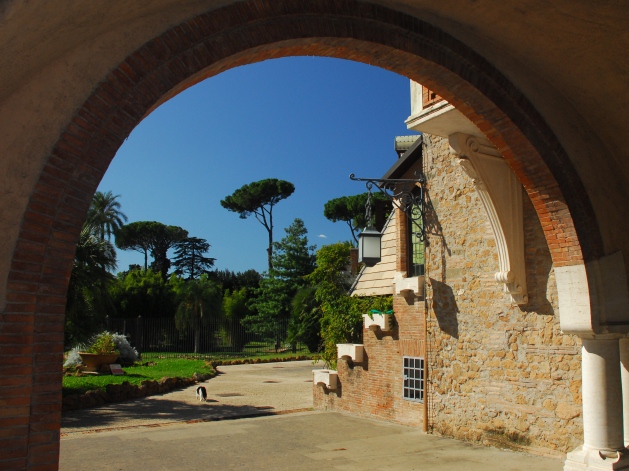
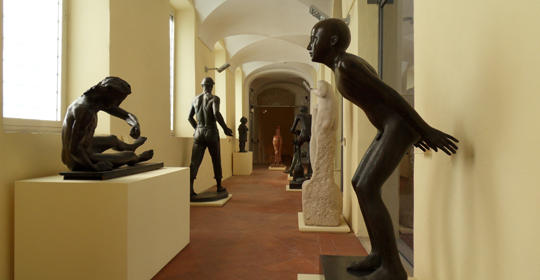
Inside some splendid historic palaces, industrial buildings, and lush green spaces are contemporary museums that keep precious collections: from sculpture to painting, from design to photography, from fashion to cinema, from valuable objects and furnishings to art installations.
A stone's throw from Piazza di Spagna, in an ancient cloistered monastery from the end of the 16th century, is the Galleria d'Arte Moderna di Roma Capitale, whose collection testifies the Roman artistic environment between the second half of the 19th century and the second post-war period with masterpieces by Giulio Aristide Sartorio, Nino Costa, Onorato Carlandi, Mario Mafai, Scipione, Gino Severini, Giorgio Morandi, Giuseppe Capogrossi, Afro, Alberto Savinio, Carlo Carrà, Carlo Rivalta, Arturo Martini, Marino Marini, Giacomo Manzù.
Located in the Rione Trastevere, the Museo di Roma in Trastevere shows the salient aspects of Roman folklife in the late 18th and 19th centuries, filtered through the tastes and beliefs of the artists and folklorists who represented it. Inside it keeps an interesting collection of paintings, prints, drawings and watercolours, a 19th-century Roman nativity scene and materials that belonged to the great poet Trilussa.
Cultural production, research, artistic experimentation and meeting between different disciplines join in the Centre of Contemporary Cultures which includes the Palazzo Esposizioni Roma, the Macro, the Mattatoio and the RIF-Museo delle Periferie. The Palazzo delle Esposizioni is the largest exhibition and multidisciplinary space in the centre of Rome in the majestic white building in Via Nazionale inspired by the classicist tradition. The Macro is a performative space. It is an extraordinary example of integration between industrial archaeology and contemporary architecture in which situations, exhibitions and projects coexist. The Mattatoio of Rione Testaccio, in the building once used for the slaughter of cattle, hosts installations and exhibitions of contemporary art. The RIF is a project that focuses on the suburbs and the knowledge of third-millennium metropolises.
On 29,000 square meters in the Flaminio district stands the MAXXI - National Museum of 21st Century Arts, designed by the Anglo-Iraqi architect Zaha Hadid, the first national museum dedicated to contemporary arts and architecture. It produces and hosts art and architecture exhibitions, design projects, photography, fashion, film reviews, and theatre and dance performances.
The large city parks tell a fascinating story of marvellous villas, shining marbles and ancient noble families, where art and nature meet. In Villa Borghese, among sculptures, fountains and enchanting gardens, are several museums. The Galleria Nazionale houses about 20,000 works, including paintings, drawings, sculptures, and installations that bear witness to the main artistic movements from the 19th century to the present day. The Pietro Canonica Museum, the home studio of the internationally renowned sculptor, is today a small but precious museum with fine furnishings and Piedmontese 19th-century paintings, a library and a photographic archive. The Carlo Bilotti Museum, located in the old Orangery, welcomes the permanent donation of works of art by the Italian-American entrepreneur and internationally renowned collector.
Villa Torlonia, once a sumptuous noble residence, offers the public four exhibition museum sites: the Museum of the Casina delle Civette, dedicated to artistic stained glass, the Museum of the Casino Nobile, which houses the Museum of the Villa and the collection of the Roman School, The Casino dei Principi, home to the archive of the Roman School and space for temporary exhibitions, and the Serra Moresca, whose architecture is inspired by the Alhambra in Granada.
In the collective imagination, Rome is synonymous with great cinema. Since the 1950s, international and Italian directors have filmed colossal movies and masterpieces in the Cinecittà Studios - the "Hollywood on the Tiber". Here is the MIAC - Museo Italiano dell’Audiovisivo e del Cinema, a multimedia, interactive and immersive museum. It displays the origins of cinema, the arrival of television, new digital technologies and unforgettable characters and masterpieces through an immense 120-year-long heritage.
The history of tailoring art and haute couture, born in the heart of Rome's historic centre, is extraordinarily displayed at the House-Museum Boncompagni Ludovisi in the Villino of the same name. Clothes by famous stylists, important tailors and prestigious Roman fashion houses, handcrafted hats and shoes illustrate the evolution of Italian fashion from the end of the 19th century to the last decades of the 20th century, together with precious objects and works of art and design, from the end of the 18th to the entire 20th century.
Rome has been a favourite destination for many artists, who sought inspiration from its monuments and works of art and chose the city as their ideal place of residence.
In the Della Vittoria district is the apartment where Alberto Moravia (Rome, 1907-1990), writer, critic, essayist and intellectual, lived since 1963. Even today, you can breathe the minimal atmosphere of the time and the sober personality of the landlord. In the splendid Piazza di Spagna, at number 31, on the top floor of the 17th-century Palazzetto dei Borgognoni, Giorgio De Chirico lived from 1948 until 1978, the year of his death. The house, defined in De Chirico's Memoirs as being located "in the centre of the centre of the world", houses a magnificent collection of works of art, the artist's atelier and a valuable library. In via di San Teodoro, between the Campidoglio and the Roman Forum, the House Museum of Giacinto Scelsi (Count of Ayala Valva, 1905-1988) houses the instruments, the piano and all the furniture of the musician. Near Piazzale Flaminio stands the eclectic Villa Helene, the home studio of the sculptor Hendrik Andersen (1872-1940). Here Andersen dedicated himself to his utopian project of the perfect "World City". The magnificent sequence of monumental statues is impressive. In northern Rome, the Venanzo Crocetti Foundation Museum houses more than one hundred works, including bronzes, marbles, stones, and paintings by the Abruzzese sculptor (Giulianova 1913 - Rome 1998).
 Condividi
Condividi












































